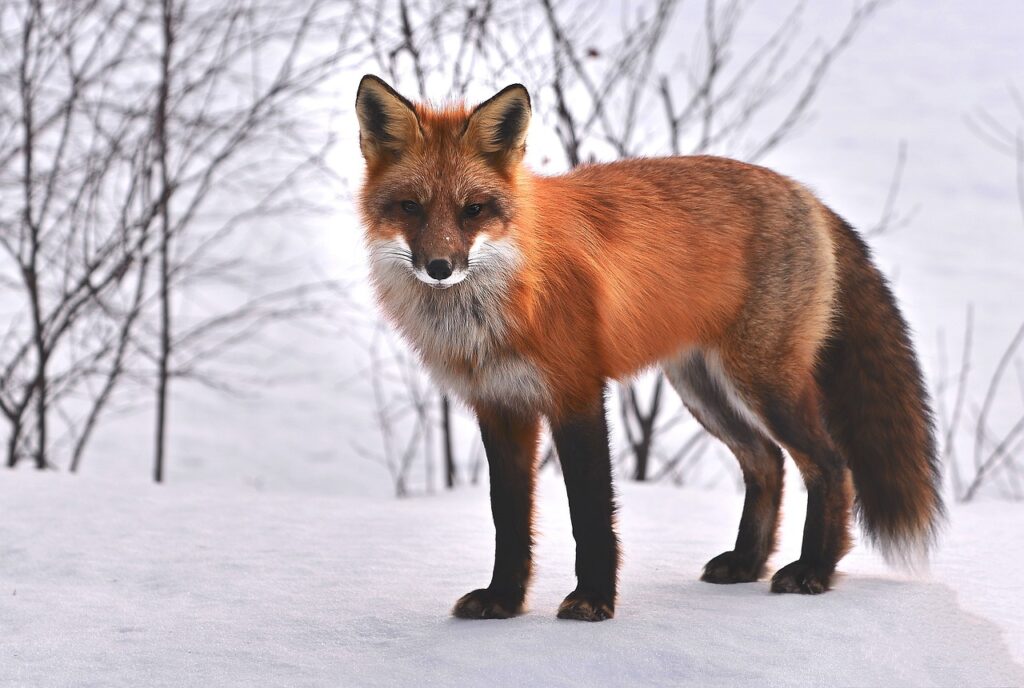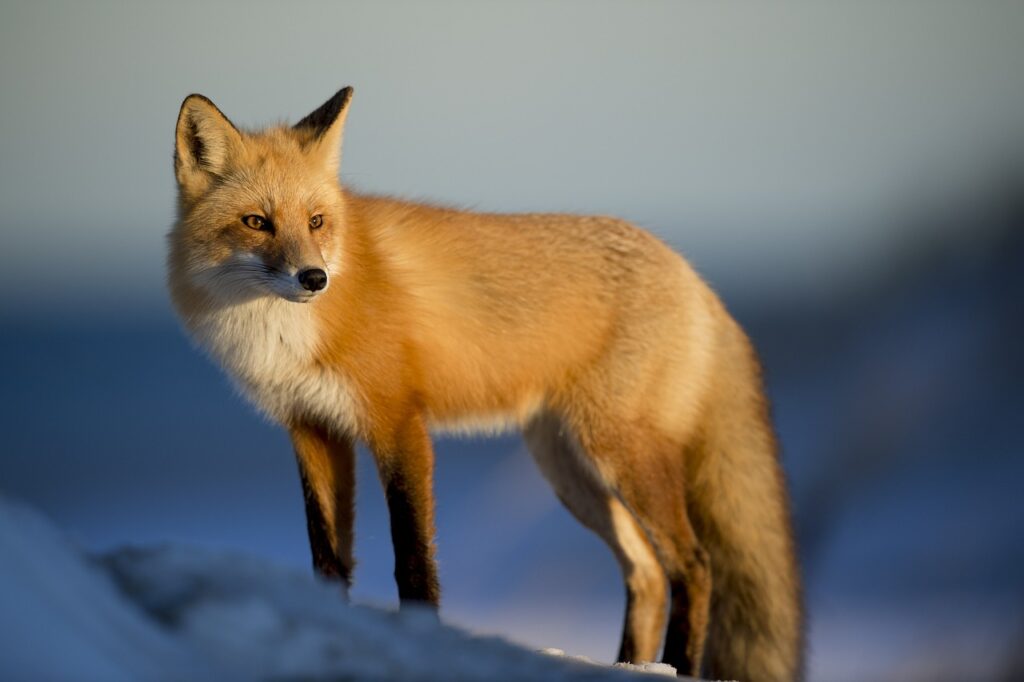Discover the fascinating world of foxes! Explore their habitats, behaviours, and unique traits in this engaging guide filled with fun facts and insights.
Foxes are some of the most intriguing animals on the planet. With their clever behaviour, striking appearance, and adaptability to various environments, foxes captivate the imagination of animal lovers and researchers alike. Whether you’re a wildlife enthusiast or just curious about these sly creatures, this guide dives into all things foxes-from their habits and habitats to their unique traits and relationship with humans.
What Makes Foxes Unique?
Foxes belong to the Canidae family, which includes wolves, dogs, and jackals, yet they stand out with their smaller size, bushy tails, and pointy faces. These features give them a sleek, almost mystical look that often earns them starring roles in folklore and stories worldwide.
The Iconic Red Fox
The red fox (Vulpes vulpes) is the most common species and can be found across the Northern Hemisphere. Known for its vibrant red fur, white-tipped tail, and sharp black ears, this fox is what most people picture when they think of the word “fox.”
But foxes are much more diverse than you might realise. There are over 37 species of foxes, ranging from the Arctic fox that thrives in freezing tundras to the desert-dwelling fennec fox with enormous ears.

Where Do Foxes Live?
Foxes have an impressive ability to adapt to nearly any environment, which explains why they’re found on every continent except Antarctica. Let’s take a closer look at their habitats:
1. Forests and Woodlands
Foxes thrive in forests where they can find plenty of cover and prey like small mammals, birds, and insects.
2. Urban Areas
In recent decades, foxes have become urban adventurers, scavenging in cities and suburbs. They’ve mastered the art of living alongside humans, rummaging through bins or finding food in parks and gardens.
3. Deserts and Tundras
Extreme environments don’t faze foxes. The Arctic fox, for instance, has dense fur and small ears to conserve heat, while the fennec fox is built to withstand the scorching desert heat.
What Do Foxes Eat?
Foxes are omnivores, meaning their diet is incredibly varied. They hunt small animals like rabbits, rodents, and birds but also enjoy fruits, berries, and even insects.
In urban settings, foxes adapt their diet to include scraps from human food, which is why they’re often spotted near garbage bins or scavenging leftovers.
Fun Fact: Foxes are excellent hunters, using their acute hearing to locate prey. They can even detect small mammals beneath layers of snow or underground!
Fox Behaviour: Clever and Cunning
Foxes are known for their intelligence and problem-solving skills. Here are a few standout behaviours that make them so fascinating:
1. Leaping Pounce
One of their most iconic hunting techniques is the high-arched pounce. This behaviour isn’t just entertaining to watch—it’s also incredibly effective for surprising prey.
2. Marking Territory
Foxes use scent glands and urine to mark their territory. This not only warns off rivals but also helps them navigate large areas.
3. Playful Nature
Foxes love to play, especially young kits. Whether it’s mock hunting, chasing each other, or wrestling, this playtime is essential for developing their hunting skills.
The Fox Family: Social or Solitary?
Foxes are generally solitary hunters but can be surprisingly social within their family units. They form small groups called leashes or skulks, typically consisting of a mated pair and their offspring.
When raising kits, fox parents share the responsibilities. The mother stays close to the den, while the father hunts and brings food back. Once the kits grow older, they learn survival skills by observing their parents.
Foxes in Folklore and Culture
Foxes have held a prominent place in myths and stories for centuries. Often portrayed as cunning tricksters, they symbolise intelligence, adaptability, and sometimes deceit.
Famous Examples in Folklore:
- Japanese Kitsune: In Japanese mythology, the kitsune is a fox spirit with magical abilities, including shape-shifting.
- Aesop’s Fables: The fox is a recurring character, often outsmarting others with its cleverness.
- Native American Legends: Foxes are seen as wise and resourceful, often helping humans in difficult situations.

Conservation Status: Are Foxes in Danger?
While the red fox is widespread and thrives in many environments, not all fox species are so fortunate.
1. Endangered Species
The Darwin’s fox, native to Chile, and the island fox of California are endangered due to habitat loss and human interference.
2. Threats to Foxes
- Habitat destruction from urban expansion.
- Hunting and trapping, either for fur or because they’re seen as pests.
- Climate change, which affects food sources and habitat stability.
Conservation efforts, such as protected reserves and awareness campaigns, are crucial for ensuring these beautiful creatures survive.
How to Spot a Fox in the Wild
If you’re eager to see a fox in its natural habitat, follow these tips:
- Dusk or Dawn: Foxes are crepuscular, meaning they’re most active during twilight hours.
- Stay Quiet: Foxes are shy and easily spooked. Move slowly and avoid loud noises.
- Look for Tracks: Fox tracks have an oval shape with four toes and a distinct diamond pattern.
Fun Facts About Foxes
- Foxes communicate with over 40 different sounds, including barks, yips, and screams.
- They have whiskers on their legs and faces to help them navigate in the dark.
- A fox’s tail, known as a brush, is not just for show—it’s used for balance, warmth, and communication.
How Can You Help Foxes?
If you’re passionate about protecting foxes, here are some ways to make a difference:
- Support Conservation Groups
Donate to organisations focused on fox and wildlife conservation. - Educate Others
Share what you’ve learned about foxes with friends and family to spread awareness. - Respect Their Space
If you encounter a fox, observe from a distance. Never attempt to feed or approach them.

Final Thoughts
Foxes are truly remarkable animals, combining beauty, intelligence, and adaptability. From their playful antics to their clever hunting strategies, they offer endless fascination.
By understanding and respecting these creatures, we can ensure they continue to thrive in the wild and coexist with humans in urban areas.
Bring the magic of the wild home – snuggle up with this adorable Red Fox Plush today! –> Click here
